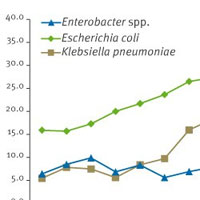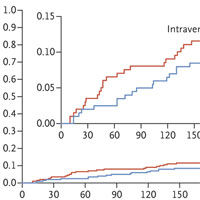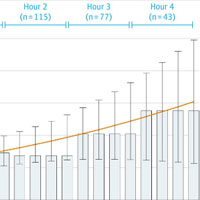Tag: antibiotics

Six Reasons to Avoid Fluoroquinolones in the Critically Ill
As an internal medicine resident and pulmonary/critical care fellow, I loved fluoroquinolones. They were effective, easy to prescribe, and had 100% oral bioavailability. However, working full-time in the ICU has forced me... read more
Viral Sepsis in Children
Sepsis in children is typically presumed to be bacterial in origin until proven otherwise, but frequently bacterial cultures ultimately return negative. Although the incidence of viral-induced sepsis is not precisely known,... read more

Drug-resistant Superbug Spreading in Hospitals
A superbug resistant to all known antibiotics that can cause "severe" infections or even death is spreading undetected through hospital wards across the world, scientists in Australia warned on Monday. Researchers at the... read more

New antibiotics and antimicrobial combination therapy for the treatment of gram-negative bacterial infections
Only few new molecules have an adequate activity against MDR gram-negative pathogens, especially carbapenemase-producer strains. Among these, ceftozolane/tazobactam has been recently approved for clinical use. Other compounds,... read more

Diagnosis and Treatment of Clostridium difficile Infection
Clostridium difficile infection (CDI) is less common than antibiotic-associated diarrhea and irritable bowel syndrome. There is significant concern about overdiagnosis and subsequent overtreatment of CDI with increasing use... read more

Partial Oral versus Intravenous Antibiotic Treatment of Endocarditis
In patients with endocarditis on the left side of the heart who were in stable condition, changing to oral antibiotic treatment was noninferior to continued intravenous antibiotic treatment. After randomization, antibiotic... read more

Probiotic and Synbiotic Therapy in the Critically Ill
Recent medical history has largely viewed our bacterial symbionts as pathogens to be eradicated rather than essential partners in optimal health. However, one of the most exciting scientific advances in recent years has been... read more

Effect of procalcitonin-guided antibiotic treatment on clinical outcomes in ICU patients with infection and sepsis patients
Procalcitonin-guided antibiotic treatment in ICU patients with infection and sepsis patients results in improved survival and lower antibiotic treatment duration. Mortality in the 2252 procalcitonin-guided patients was significantly... read more

Dying as a Pathway to Death in Sepsis
Mortality from sepsis remains high, with at least 270,000 deaths annually in the United States and more than 5 million deaths worldwide. Despite increasing understanding of the pathophysiology of sepsis, outside of targeted... read more

Lies, Damned Lies, and Sepsis Bundles
The Surviving Sepsis Campaign recently released an update to the bundles of care it recommends for "sepsis" patients. You may have heard of the three-hour bundle, which essentially means that you do a bunch of stuff (lactate,... read more

Intravenous Fish Oil (Omegaven) Approved by FDA
Intravenous Fish Oil (Omegaven) approved by FDA for use in total parenteral nutrition (TPN) in pediatric patients in the United States. Omegaven 10% Emulsion is a fish oil emulsion administered intravenously in patients who... read more

Difficult-to-Treat Resistance in Gram-negative Bacteremia at 173 US Hospitals: Retrospective Cohort Analysis of Prevalence, Predictors, and Outcome of Resistance to All First-line Agents
Nonsusceptibility to first-line antibiotics is associated with decreased survival in GNBSIs. DTR is a simple bedside prognostic measure of treatment-limiting coresistance. The Premier Database was analyzed for inpatients... read more
Variability in Antibiotic Use Across PICUs
Margaret Parker, MD, MCCM, speaks with Thomas V. Brogan, MD, about the article "Variability in Antibiotic Use Across PICUs," published in the June 2018 issue of Pediatric Critical Care Medicine. Dr. Brogan discusses study... read more

Association Between the New York Sepsis Care Mandate and In-Hospital Mortality for Pediatric Sepsis
In New York State following a mandate for sepsis care, completion of a sepsis bundle within 1 hour compared with not completing the 1-hour sepsis bundle within 1 hour was associated with lower risk-adjusted in-hospital mortality... read more








